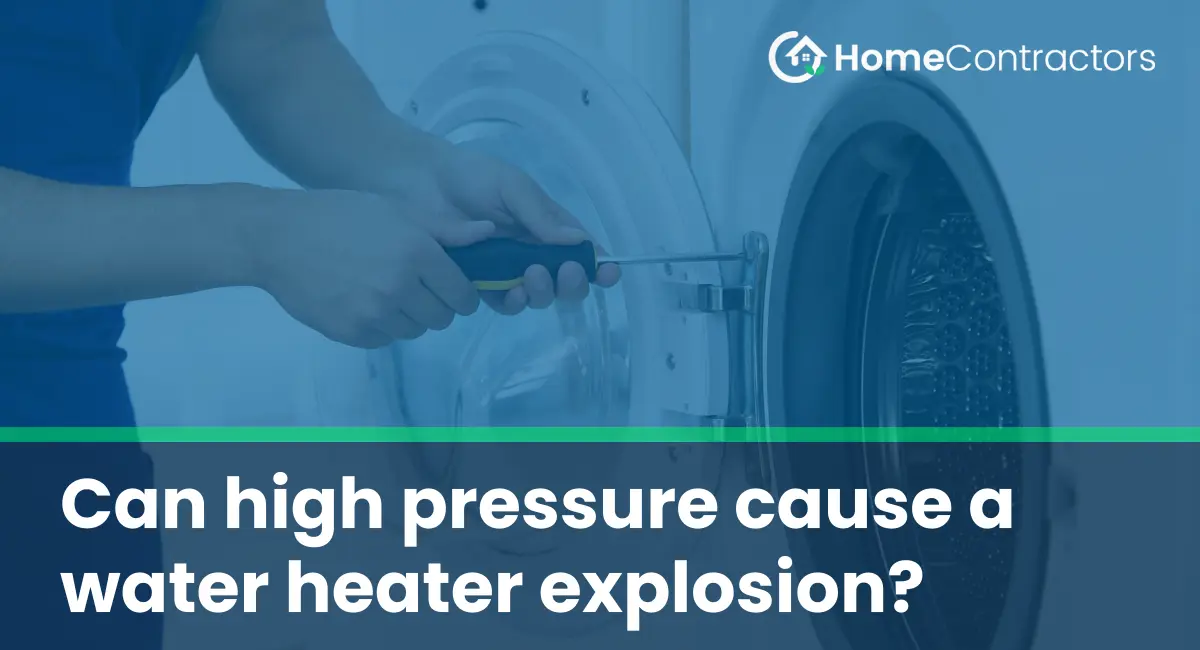Water heaters are an essential part of our daily lives, providing warm water for showers, laundry, and other household tasks. However, like any other mechanical device, they can pose risks if not properly maintained and monitored. One such risk is the potential for a water heater explosion, and high pressure is a contributing factor that can lead to this catastrophic event. In this article, we will explore the relationship between high pressure and water heater explosions, the causes, signs to look out for, and preventive measures you can take to avoid such a dangerous situation.
Understanding Water Heater Explosions:
A water heater explosion occurs when the pressure inside the tank becomes too high and exceeds its limitations. This excessive pressure can cause the tank to rupture, leading to a violent explosion that can result in property damage, serious injuries, and even death. While rare, these incidents can occur due to various factors, with high pressure being one of the primary triggers.
Causes of High Pressure in Water Heaters:
1. Temperature and pressure relief valve failure:
The temperature and pressure relief (TPR) valve in a water heater is designed to release excess pressure and prevent a buildup. However, if this valve malfunctions or fails to operate correctly, it can result in high pressure within the tank.
2. Sediment buildup:
Over time, sediments, such as minerals and debris, can accumulate in the bottom of the water heater tank. This sediment buildup can act as an insulator, causing the water to heat more than usual and consequently increasing the pressure inside the tank.
3. Thermostat malfunction:
A faulty thermostat can cause the heating element to remain on for an extended period, causing the water to continuously heat and raise the pressure within the tank beyond safe levels.
Signs of High Pressure in a Water Heater:
It is crucial to be vigilant for signs of high pressure in your water heater to prevent potential explosions. Some common signs include:
1. Water leaking from the TPR valve:
If you notice water dripping or pooling around the temperature and pressure relief valve, it often indicates high pressure within the tank. This valve is designed to release excess pressure, so any water leakage might be a sign of a problem.
2. Strange noises:
Unusual popping, rumbling, or banging sounds coming from the water heater could be a result of high pressure. These noises occur when the sediments trapped within the tank heat up and create steam bubbles, causing the tank to vibrate or make knocking sounds.
3. Constantly high water temperature:
If your water is consistently hotter than usual, it might indicate that the thermostat and temperature regulation mechanisms are malfunctioning. This can result in elevated pressure within the tank.
Preventive Measures to Avoid Water Heater Explosions:
1. Regular maintenance and inspections:
Schedule regular maintenance visits with a qualified professional to ensure that your water heater is properly maintained and inspected for any signs of pressure issues or potential malfunctions.
2. Flushing the tank:
Periodically flushing your water heater tank to remove sediments and debris can reduce the risk of high pressure by preventing sediment buildup. Follow the manufacturer’s guidelines or seek professional help to perform this crucial maintenance task.
3. Testing the TPR valve:
Check your temperature and pressure relief valve annually to ensure it is functioning correctly. If the valve is faulty, replace it immediately to prevent pressure-related accidents.
4. Adjusting thermostat settings:
Ensure that the thermostat settings are accurate and within the recommended range for your water heater. Incorrect settings can lead to continuous heating and unnecessarily high pressure.
While water heater explosions are rare, it is essential to understand the risks associated with high pressure within these devices. By being proactive in maintenance, inspection, and monitoring of your water heater, you can minimize the chances of high pressure leading to a catastrophic explosion. Regularly flushing the tank, testing the TPR valve, and ensuring proper thermostat settings can go a long way in preventing such incidents, keeping your home and loved ones safe.
